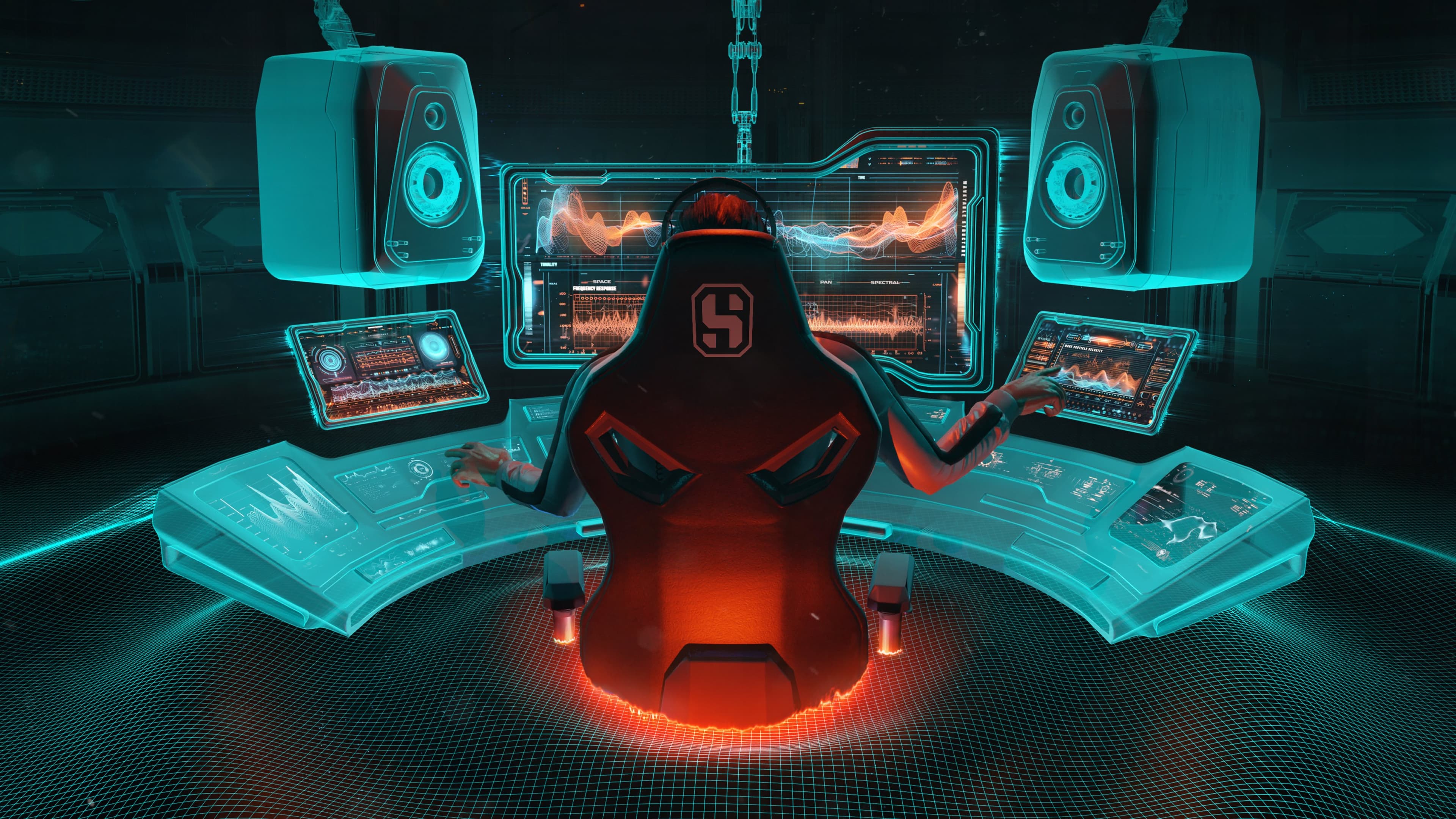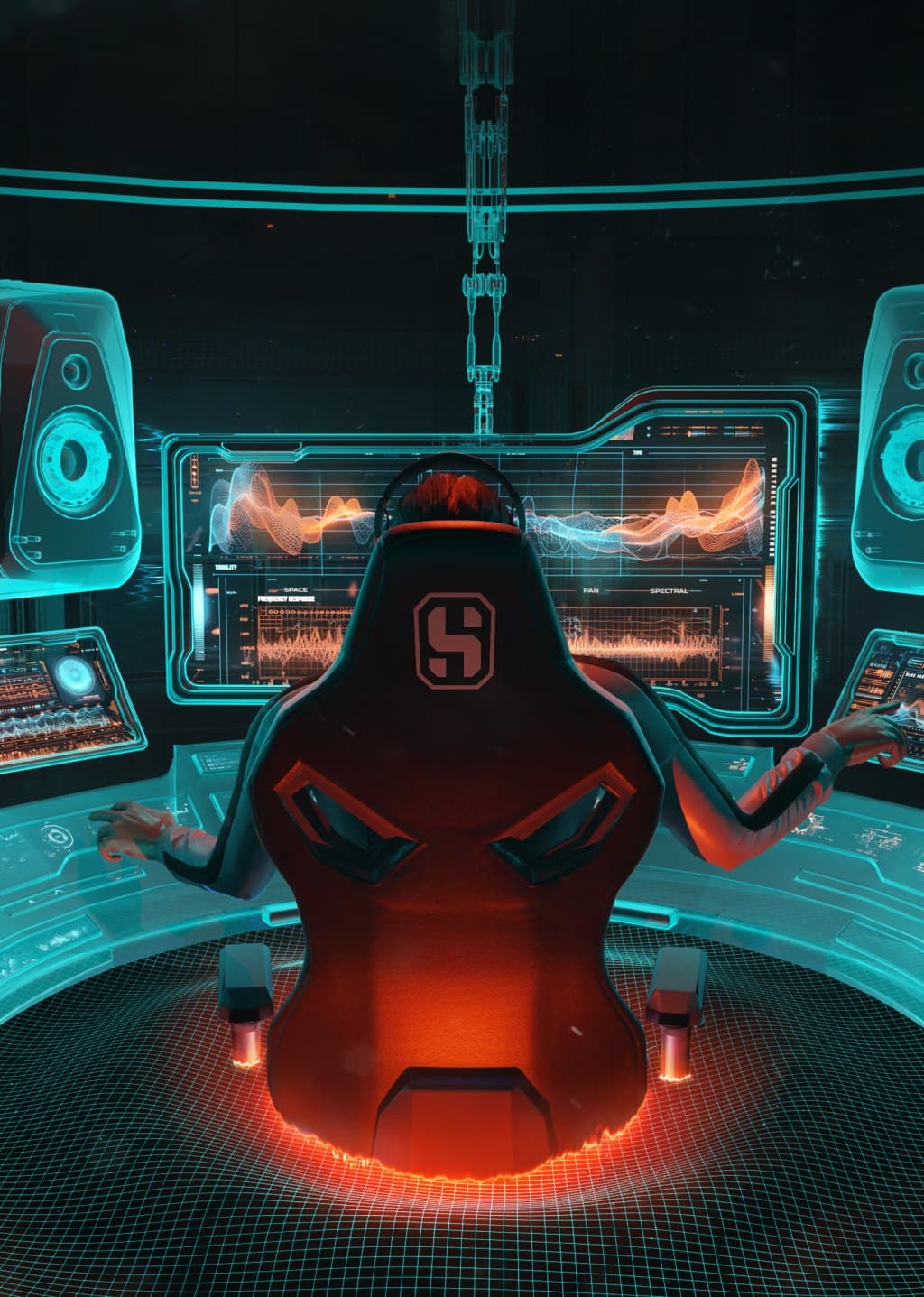



"What does the future sound like?"
When tasked with creating the sound design of a post-apocalyptic hero-shooter set in the year 2099, our Audio team was indirectly tasked with answering this question. The soundtrack in Steel Hunters needed to be futuristic and reflecting of its dystopian world. "New sounds" had to be created for materials and weapons that do not (yet) exist.
But what exactly sounds futuristic to us is often bond to the time we currently live in.
In 1919, composers Hauer and Schoenberg baffled the world with their dodecaphonic approach to music. Or better: They decided that all notes are equal, and wrote explicitly difficult compositions with seemingly no melodic coherence, strong tempo and technical emphasis and very off sounding, peaking bits. Classical instruments started sounding mechanic, robotic almost. Emotion was removed from the equation.
Opposite to that, our composers and sound engineers selected a different approach: Minimalism. This is a style lately popularized through use in movies such as "Tenet" - the listener is exposed to repetitive sounds and rhythms. By varying the intensity and timing in which these are played, adding or removing micro-rhythms, we are forced to listen closely to it. Minimalist music has proven to be able to move us emotionally. And another decisive factor in it are the sounds and frequencies used, which only seldom are produced with classical instruments. They feel "new."
If you by now think our sound team ventured out and squeezed themselves through air vents, trying to record all different types of new sounds: You're right. We did exactly that. A little crazy enhances the creativity. But not only did we rely on uncommon practices: We have classically trained musicians and a wide array of instruments and synthesizers at our disposal - and an iron will to experiment. The result is a blend of ancient and modern. In Steel Hunters you can find us using instruments like e.g. jaw harp just as well as a LYRA-8 and PULSAR-23 synthesizer, among others. These last 2 are most important in the process: The LYRA-8 can create a wide range of organic sounds, some of which can almost not be replicated if you do not exactly know how to use it. The PULSAR-23 is a more straightforward synth that can add instrumental composition.
When a dignified master of music uses all these at their disposal, they can - through the use of effects like sidechaining or ducking - create clarity and harmony within a musical arrangement of wild sounds. Sidechaining and ducking are both techniques that use a certain domino effect - they create audio signals that interact with other audio signals - thus triggering sounds that can create emotional response. One of these can be the release of dopamine in humans. Or better: To trigger happy hormones.
Having defined an emotional approach for our game's music, now we took on enhancing the connection of this emotionality and the players. First of all, in-game the audio engine had to be flexible. During intense battles, the sound "escalates" - enhancing the moment of what is happening on-screen. Additionally, we were able to add "micro-rhythms". Since clarity and simplicity dominates our minimalistic musical approach, there was enough space to incorporate these - and they really make a difference, confirming errors or amplifying a Player's sense of victory when things are going great.
The Hunters themselves - like Darth Vader in Star Wars - were of course entitled to their very own distinctive audio identity. Voiceovers - performed by original actors - were recorded and are continuously re-recorded to make sure we can transmit the human element in the final game. A Hunter's personality.
"A painter paints on canvas. Musicians paint on silence." - Leopold Stokowski
Before a Hunter utters it's first word in battle, it has usually been around quite some time already - in drawings, in narrative, even as a model in engine. It probably already has a name, abilities and a clear definition of how it fits into the world. But a voice, it has not.
As the game comes to life, the Hunters turn into members of our SH team family themselves - so it only makes sense that everybody in our team can suggest voice-lines for them. Once the writing stands, we proceed to select voice-actors from a wide portfolio provided by different agencies. During recording sessions all lines from the script are usually recorded more than once. The actors are tasked with emphasizing different parts of the script, words, sounds, to give us options to choose from. The Steel Hunters team directs these recordings, making sure the project develops in the direction we want it to.
Upon entering the game, one of the first musical bits you'll encounter is the lobby theme. If you listen carefully, you will re-encounter this in a more dynamic remix when you transition into the matchmaking phase. The idea behind this: The olayer shall meet first with the soothing, relaxing sounds of preparing for a game, but be slowly enticed to action when transitioning into the game. This small example hopefully serves well to show the care we put into crafting every aspect of this game, and how dedicated we are to perfecting it.
Then later, when the battle heats up, so does the music. The more intense the battle, the more intense the music. Makes sense. But there's more happening during a game - you might want to try to listen to this when you play SH the next time:
Also, as all of you know, each map in Steel Hunters features landmarks that define it. Like Dinoland, or the Launch Pad.
So, we developed custom ambiances for each environment, capturing terrain changes, positions, heights, and other factors that affect sound dynamics.
And additionally - and most importantly for a portion of realism - we've implemented a sophisticated sound propagation system on how sound travels, with delays that increase with distance.
Now this, of course, does not quite play out like in the real world: Sound travels much slower than light, at a 330m/s. This means e.g. if Heartbreaker shoots you from 1km away, you would only be able to hear the shoot about 3 seconds after it hit you. What in the real world happens, can seem bizarre in a video game. Finding the sweet spot between realism and playability - doing the fine adjustment so it feels, looks and sounds real but is still easy to play - is our mission.
As mentioned, we use synths and more uncommon methods to find the yet unheard sounds of the future. The previously mentioned air duct research with contact mics happened e.g. whilst we were researching sounds for our new upcoming map, "Flooded City". Some of these sounds were then integrated into the official soundtrack. We have an extensive roadmap that spans across all audio facets, aimed at adding an extra layer of shine and depth to Steel Hunters. Beginning with the implementation of Dolby Atmos for a truly immersive audio experience, we are also integrating proper convolution reverberation to enhance environmental realism. This is a system that allows us to refine sound - just like images are perfected in movie post-production with filters and colouring etc. - and brings us closer to reverb the real-world sounds.
By further experimenting with our modular synthesizers, we are able to push beyond the borders of new sounds we have discovered and further refine them.
But, hey, look - let's come full circle with the beginning of this article. What is futuristic and what is not is can often be determined by the time we live in. In 1919 it was overcomplicated, technical, braking the borders of harmony. Nowadays, it is the minimalist opposite.
And then the 20's also gave us the infamous Theremin, the 60's revolution were synthesizers, and the 80's the brought about the first digital sound - all things you look at nowadays and think "yeah - 20's, 60's and 80's stuff".
And in turn that also means that staying ahead and constantly keeping up the search for new stuff is going to be part of our jobs once we're live.
Sound can create an emotional response - a feeling of joy - that reminds us of a beloved game we used to play years ago. Recently I went for a walk through the city by night with a friend, now 35. We talked about childhood Video Games. At some point he said: "There was this game I used to play when I was 16. We would go to a friend's house, stay there all day to play it, all summer. It was the best of times! What is stuck in my head, was that amazing 8-bit Soundtrack. Whenever I hear it, or anything that reminds me of it, it really makes me smile. I feel all cozy and happy then."
Yeah. This is exactly what we are gunning for.